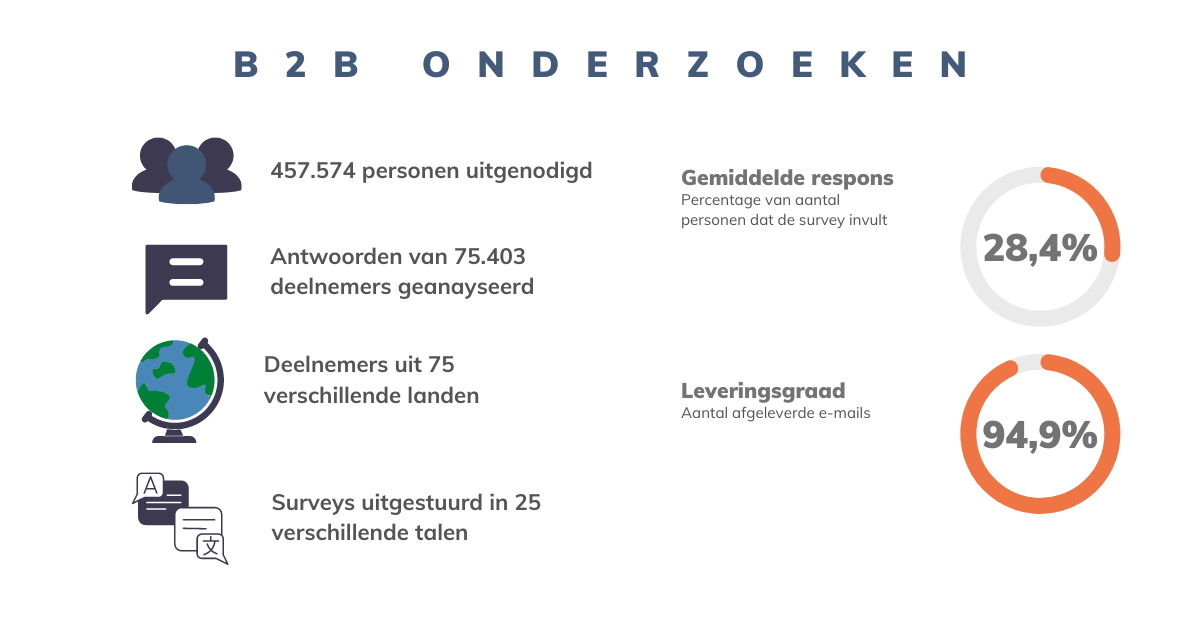How our survey methodology achieves an NPS increase of 2.6 points on average
Delivering a good customer experience and being recommended is essential for any business. It creates new customers, upsells to current customers and prevents less satisfied customers from going to competitors. But how do you achieve this? And how do you ensure that that customer experience is improved year on year?

At AlphaRainbow, we are data-driven and constantly try to challenge our gut feeling and that of our customers. This provides fact-based insights on facts that allow you to focus on what really matters. In this blog, we talk about the effectiveness of our customer satisfaction research and demonstrate that our method contributes to a higher NPS and therefore to greater customer satisfaction and loyalty.
Our customer satisfaction survey uses the Net Promoter Score method, NPS in short. This is a measure of the extent to which your customers are willing to recommend your company. Although its inventor, Fred Reichheld, states that NPS is the only question a business needs for growth, we believe this is highly questionable as NPS is just one number. This means you know the extent to which your customers would recommend your company, but you don’t know why they would do so, and how you can improve this number. Therefore, in addition to this question, we submit additional statements that provide depth that companies need in order to develop a strategy to increase customer satisfaction and loyalty. These statements are based on the aspects of the business that influence the final customer experience. A well-structured and reliable survey that allows for subsequent action is what companies need.
Our philosophy is to enable companies to improve their customer experience by focusing on the key aspects that have the most impact on it.
Since 2014, we have conducted 71 business-to-business surveys. This only includes customer surveys that have been conducted multiple times, allowing us to analyse the trend.
We discovered that on average, our customers’ NPS increases by 2.6 points after each survey conducted (P<0.001)*. Understandably, increasing NPS is easier in some industries or contexts. Therefore, we took into account the variation between customers’ NPS. In addition, for each survey conducted, the average score on our customers’ statements increases by 0.4 (P<0.01)*.

The conceptual model of our research is based on the impact of statements on NPS and thus on customer satisfaction and loyalty. To determine this impact, we perform advanced statistical analysis. This allows us to know which aspects have the most, but also which aspects have the least, impact on the NPS. By focusing on the five aspects with the most impact, you increase the chances of a higher NPS and therefore high customer loyalty.
The model we use for this was developed in collaboration with our partner CQM; experts in quantitative methods. We found a strong causal relationship between the NPS and the average score on the statements (P<0.001)*. This provides statistical validity to our conceptual model, therefore confirming our assumption that aspects impacting customer experience do indeed drive NPS.
So what? This analysis tells us that we are on the right track. It proves to us that our method works and that our approach to improving satisfaction through focus is making a difference for companies.
Want more information on how we implement customer satisfaction on a national or global scale? Or do you need help creating focus from data? Then contact us here.
*chances are this is based on coincidence

Lotte Koehorst
Project Manager